
|
You entered: motion
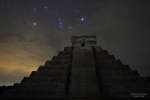 Orion over El Castillo
Orion over El Castillo
21.12.2012
Welcome to the December solstice, a day the world does not end ... even according to the Mayan Calendar. To celebrate, consider this dramatic picture of Orion rising over El Castillo, the central pyramid at Chichén Itzá, one of the great Mayan centers on the Yucatán peninsula.
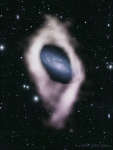 APOD: 2023 September 13 Б NGC 4632: Galaxy with a Hidden Polar Ring
APOD: 2023 September 13 Б NGC 4632: Galaxy with a Hidden Polar Ring
12.09.2023
Galaxy NGC 4632 hides a secret from optical telescopes. It is surrounded by a ring of cool hydrogen gas orbiting at 90 degrees to its spiral disk. Such polar ring galaxies have previously been discovered using starlight. However, NGC 4632 is among the first in which a radio telescope survey revealed a polar ring.
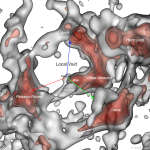 The Local Void in the Nearby Universe
The Local Void in the Nearby Universe
5.08.2019
What does our region of the Universe look like? Since galaxies are so spread out over the sky, and since our Milky Way Galaxy blocks part of the distant sky, it has been hard to tell.
 Big Dipper Above and Below Chilean Volcanoes
Big Dipper Above and Below Chilean Volcanoes
8.05.2017
Do you see it? This common question frequently precedes the rediscovery of one of the most commonly recognized configurations of stars on the northern sky: the Big Dipper. This grouping of stars is one of the few things that has likely been seen, and will be seen, by every generation.
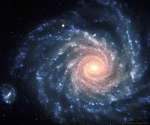 APOD: 2024 January 1 Б NGC 1232: A Grand Design Spiral Galaxy
APOD: 2024 January 1 Б NGC 1232: A Grand Design Spiral Galaxy
31.12.2023
Galaxies are fascinating not only for what is visible, but for what is invisible. Grand spiral galaxy NGC 1232, captured in detail by one of the Very Large Telescopes, is a good example.
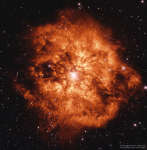 APOD: 2025 February 3 Б Wolf Rayet Star 124: Stellar Wind Machine
APOD: 2025 February 3 Б Wolf Rayet Star 124: Stellar Wind Machine
2.02.2025
Some stars explode in slow motion. Rare, massive Wolf-Rayet stars are so tumultuous and hot that they are slowly disintegrating right before our telescopes. Glowing gas globs each typically over 30 times more massive than the Earth are being expelled by violent stellar winds.
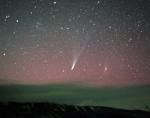 Ikeya Zhang: Comet Over Colorado
Ikeya Zhang: Comet Over Colorado
4.04.2002
Comet Ikeya-Zhang ("ee-KAY-uh JONG") has become a most photogenic comet. This lovely early evening view of the comet in Rocky Mountain skies looks northwest over ridges and low clouds. The time exposure was recorded on March 31st from an 8,000 foot elevation near Yampa, Colorado, USA.
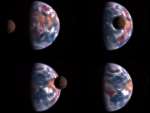 31 Million Miles from Planet Earth
31 Million Miles from Planet Earth
3.09.2008
On July 4th, 2005, the Deep Impact spacecraft directed a probe to impact the nucleus of Comet Tempel 1. Still cruising through the solar system, earlier this year the robotic spacecraft looked back to record a series of images of its home world 31 million miles (50 million kilometers) away.
 Our Rotating Earth
Our Rotating Earth
30.06.2020
Has your world ever turned upside-down? It would happen every day if you stay fixed to the stars. Most time-lapse videos of the night sky show the stars and sky moving above a steady Earth.
 Kepler s House in Linz
Kepler s House in Linz
14.05.2018
Four hundred years ago today (May 15, 1618) Johannes Kepler discovered the simple mathematical rule governing the orbits of the solar system's planets, now recognized as Kepler's Third Law of planetary motion.
|
January February March April May June July |
|||||||||||||||||||||||||||||||||||||||||||||||||